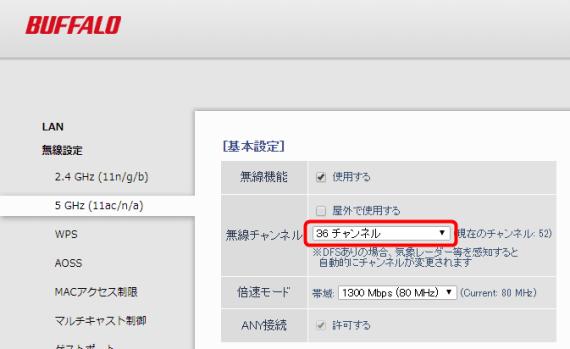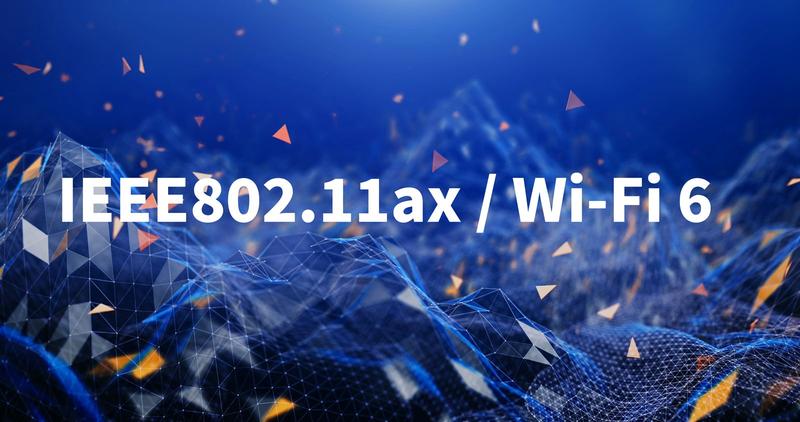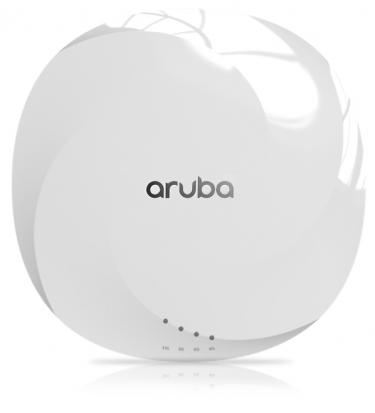What to do when Amazon products do not connect to 5GHz band Wi-Fi (Fire tab, Fire TV, Echo, etc.)
This is a summary of what to do when Amazon products such as Amazon Echo, Fire HD tablet, and Fire TV Stick cannot connect to a 5GHz band Wi-Fi access point.
Specifically, this is a countermeasure for the symptom that only the SSID of the 5 GHz band is not displayed at all on the Wi-Fi access point list screen, or only some SSIDs are displayed.
The 5GHz band is less crowded than the 2.4GHz band, and it's less affected by microwaves, so if you can afford it, you'll want to use it.
According to our confirmation, we received a reply that all Amazon products for Japan that support 5GHz band Wi-Fi are only compatible with the "W52" standard.
"W52" is the standard name of the 5GHz band Wi-Fi, and only four frequency bands of 36, 40, 44, 48ch can be used.
In addition to "W52", "W53" and "W56" are defined in the 5GHz band Wi-Fi standard. Due to the use of bands, complex controls are mandated by national law.
Amazon seems to dislike its complicated specifications, or at least has a policy of only complying with the "W52" standard for products for Japan.
This policy is consistent regardless of the model, such as Fire HD tablet, Fire TV, Fire TV Stick, Amazon Echo, Amazon Echo Spot, etc., and if it is an Amazon genuine product for Japan, it will always be "W52". is supported only.
So, in order to connect Amazon products stably to the 5GHz band Wi-Fi, there is no choice but to change the settings on the wireless LAN router side.
Specifically, one of the following settings is required on the wireless LAN router side.
When I checked in my environment, NEC Wi-Fi routers had an item that allows you to set the "search target band" all at once.
When this setting is set to "W52" only, we have confirmed that even Amazon products can connect to Wi-Fi in the 5 GHz band stably.
Also, on my Buffalo router, I was able to get a stable connection by setting the 5GHz band "wireless channel" to 36, 40, 44, or 48.

For reference, here is a screenshot of Fire HD 8 connected to the 5GHz band.
In general, the 5GHz band is more open than the 2.4GHz band, but the 5GHz band Wi-Fi of the router that narrowed down the usage channels in this method tends to be congested, so I connected to the 5GHz band of the same router. It may affect the communication speed of other devices.
We have two wireless LAN routers at home, one set to use the 5GHz band exclusively for Amazon devices, and the other set to use the 5GHz band with a wide range of channels for connecting PCs/smartphones, etc. Yes, it works well with this configuration, but if you use a single wireless LAN device, you should be careful about this.
Depending on the environment, I think one option is to use the 2.4GHz band for Amazon devices.
Just to be sure, even without these settings on the router side, Amazon products may be able to connect to Wi-Fi in the 5GHz band.
However, since the wireless LAN connection channel changes from time to time depending on the surrounding radio wave usage conditions, etc., the connection may be disconnected for some reason and it may not be possible to reconnect, and there are many cases where it is not stable.
In that sense, even if the Wi-Fi connection is unstable, it is a good idea to check whether you are not connected to the 5GHz band Wi-Fi and whether the router is set to "W52".
Let's go a little further and put together some more information about interference with wireless LANs and weather radars.
As mentioned above, among the 5 GHz band Wi-Fi standards “W52”, “W53” and “W56”, two of “W53” and “W56” are “DFS ( Dynamic Frequency Selection) channel” and is legally mandated to implement anti-interference specifications.
Specifically, this requires detailed control, such as not blowing radio waves for 1 minute after startup, or not using the channel for 30 minutes if a weather radar is detected. is.
DFS control is rarely a problem for devices such as PCs and smartphones where people are always looking at the screen, but for devices without a screen such as smart speakers, it leads to a decrease in usability. It seems easy.
At the moment, it doesn't seem like such a problem will be brought to the fore. You may get the chance to hear it.
DFS certification is implemented not only in Japan but also overseas, and similar problems are sometimes reported, especially in Europe.
It's just a guess, but perhaps Amazon only supports "W52" for Japanese devices in order to avoid Japan's DFS certification from a comprehensive point of view such as usability and cost.
In addition, 5GHz band Wi-Fi is specifically standardized under names such as 802.11 ac/n/a, and access point names have names such as "~-A" at the end. I often have


![[Osaka Marriott Miyako Hotel] Plenty of cheese! Italian buffet held company release | Nikkan Kogyo Shimbun electronic version](https://website-google-hk.oss-cn-hongkong.aliyuncs.com/drawing/article_results_9/2022/3/28/1061eb31530c979d7b766ae1877b113a_0.jpeg)




